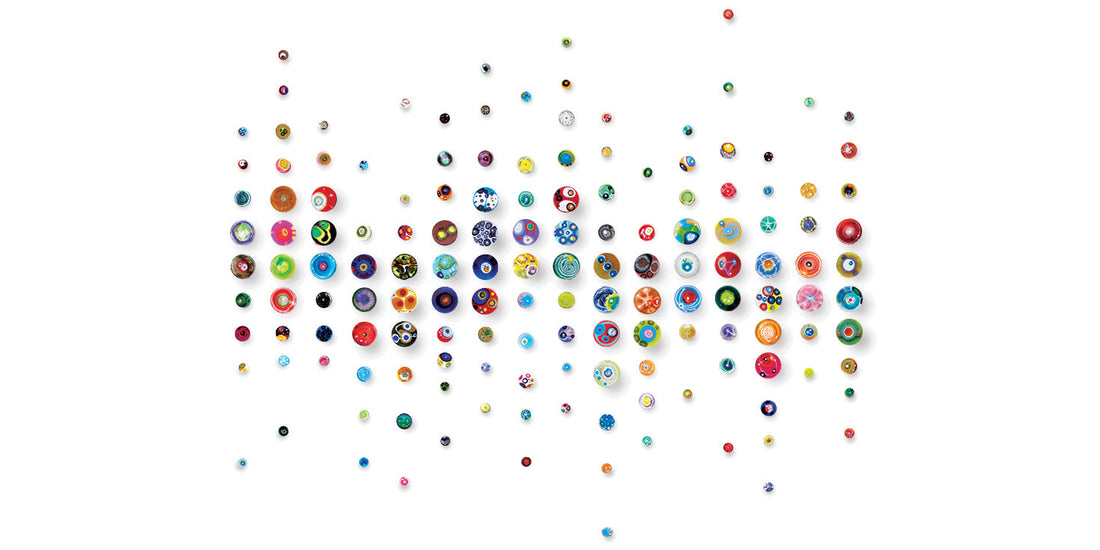The art we see in museums is unmoving and unchanging; it simply is. Though pieces’ quality will deteriorate with time, most physical artworks endure longer than mere fleeting moments. Restoration experts labor diligently to keep a masterpiece around as long as possible, giving the world more time to enjoy a work before it is eventually lost to history. However, art conservators or restorers cannot touch the impermanent, ephemeral magnificence of petri dish art.
In Bite-sized Beauties, we discussed how artists were challenged to push the bounds of their skills and create art on minuscule scales. In Art and Biology, we discussed the history of the intersectional interdependence that developed between the biological sciences and the arts. Illustrating scientific data almost always required a skilled artist to sketch out the features within different species of animals, with artists on standby to help visualize the appearance of fossilized specimens.

The intertwined nature of the arts and sciences and their historical interdependence has led to a cohesion between the fields. As technology continued to innovate, fewer artists were needed to render models and figures for these scientists, but they still contributed to discoveries through photography and screenprinting. Even when technology placed more data modeling in the hands of scientists, artists still held a crucial role in representing the paradigm shifts in these thought communities.
Early Petri Dish Art
The scientist who discovered the medicinal properties of penicillin was also an early adopter of treating these controlled environments as a space for creative expression. Alexander Fleming dedicated his life to learning about the building blocks of life on Earth; his experience in the arts was entirely self-taught, and he was a member of the Chelsea Arts Club.


While he was known to paint with watercolor within this club, the pigments he used in his petri dish pieces were cultivated in the same lab where he made his medical breakthrough in 1928. This technique was later called “the loop” and was used to inoculate different species into different parts of the petri dish. They picked up samples of microorganisms and precisely placed them within the dish. The resulting growth could be placed in new petri dishes to grow art.
Many pieces he created within Petri dishes were not particularly advanced, but they share the charm of a toddler’s drawings. His agar paintings, the gelatinous substance used as the culture medium in Petri dishes, represent a novel perspective of human curiosity. When viewing elementary artwork, one sees an initial effort of self-expression. However, while a child’s drawings immortalize a moment of curiosity and innocence, Fleming’s early petri dish drawings highlight impermanence. They were made by someone with decades of experience and dedication to understanding the natural world in ways never seen before. His paintings captured that same innocence, that same voyage into uncharted waters. His paintings were only briefly alive, a flash in the pan, dying after an instant.

What is particularly striking about modern petri dish art is its creation and public display. Klari Reis creates art within Petri dishes at such a scale that multiple art pieces can be displayed alongside one another. Whether there are 30 or 150 Petri dishes within a single installation, each agar ramekin is crafted with detail to allow each color to dance alongside the other, not just in each dish but between them. She arranges them in circular patterns for the large-scale pieces, but others take on forms of sound waves and even necklace chains.
The shapes within each dish and the installation arrangement are often left open to interpretation by the audience. Still, many include allusions to eyes, the hues of the pupils contrasting with an equally living iris. Reis’s pieces don’t stop at highlighting the complexities of microscopic life; they leave the viewer seeing themselves within the impermanent installations.

The Agar Art Contest
While fine artists and scientists worldwide look to the jelly medium for their canvases, petri dish art has become a means for people across all disciplines to create. The American Society for Microbiology (ASM) created a contest for the art form, challenging people from all walks of life to test the boundaries of microbiology to construct living art. The competition began in 2015, with more submissions coming in every year.
The 2023 theme for the contest is Microbiology in Space, urging artists to create petri dish art that explores the limitless and ever-expanding possibilities of the universe within the circular confines of agar. According to ASM, the winner of this contest will win a round trip to participate in the “Agar Art on Display” exhibition held at one of MilliporeSigma’s Innovation & Manufacturing Centers in Molsheim, France.
“Any interpretation you come up with will be accepted,” ASM’s website states. The submissions for the contest must explore the relationships between microorganisms and the vast expanse of space. Different categories for submission were designed to ensure that all aspiring agar artists could adequately participate in the contest, whether they have access to a maker space or a professional laboratory.

While the intersections of art and biology intertwine in art forms such as screen printing, few spaces for creative expression were inspired by and designed by scientists to explore self-expression within the very labs in which they pursue their academic careers. Their art’s impermanence is just as essential as their messages. That level of devotion will not physically endure, but photos of their work will live on. As their craft reaches wider audiences, this agar art can be a quintessential bridge between scientists and artists, showcasing how they can work together to propagate advancements in innovation, excellence, and self-expression.
Lede image: Klari Reis, 150 Piece Petri Dish Installation
©ArtRKL™️ LLC 2021-2023. All rights reserved. This material may not be published, broadcast, rewritten or redistributed. ArtRKL™️ and its underscore design indicate trademarks of ArtRKL™️ LLC and its subsidiaries.





